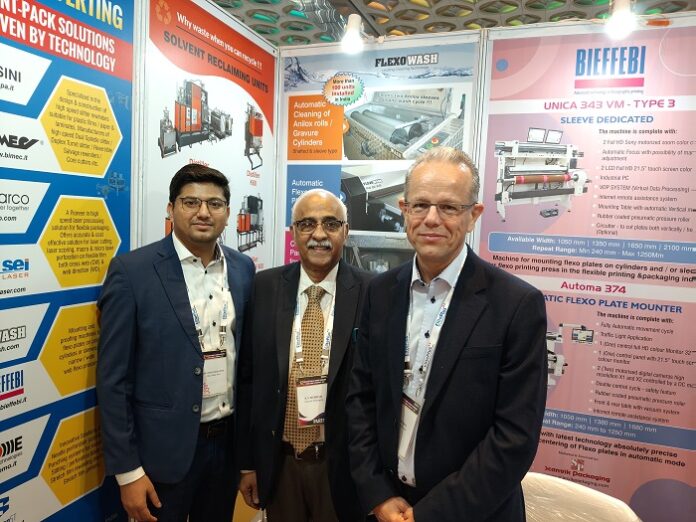
In print production, cleaning is often treated as a secondary task, yet it is one of the most decisive factors in ensuring efficiency, consistency, and profitability. Printers who neglect this final step risk hidden costs, slower changeovers, and reduced margins.
Svend Brix, sales director of Flexo Wash, stressed this point at the 12th Speciality Films & Flexible Packaging Conference and Exhibition in Mumbai, where he argued that effective cleaning is not just a routine job but a profit driver. “Production is a continuous cycle, and cleaning is the final step. If it is skipped or done poorly, it undermines productivity, consistency, and profit margins,” he said.
Flexo Wash offers high-quality cleaning solutions for the needs of printers worldwide. The company designs and manufactures automated systems for cleaning anilox rolls, printing plates, gravure cylinders, and other press components. Mumbai-based Scanvik Packaging is the exclusive agent in India and Sri Lanka for Flexo Wash products.
Automated cleaning can increase profit by 10% but is still overlooked
Brix explained that many companies do not even realize the scale of the loss because poor cleaning is an accepted norm. In markets where Flexo Wash has implemented automated cleaning systems, printers have achieved up to 10% improvement in profit margins simply by controlling the end process.
Beyond profit margins, cleaning plays a vital role in print consistency. Poorly maintained trays and rollers can add kilograms of residual ink build-up, leading to long changeovers and unpredictable print quality. “Often, print managers don’t raise cleaning issues because they are considered unimportant. Yet, without control over this final step, the entire production line suffers,” he said.
In India and other labor-abundant markets, manual cleaning is still seen as a cost-saving choice. But Brix challenged this assumption: “The workers may not be expensive, but the loss in productivity is. The real question is whether you can afford not to automate.” In contrast, in regions facing labor shortages, automation has been adopted more quickly, not only reducing dependency on manpower but also bringing consistency and higher margins.
Comparing India with other global markets, Brix noted that the perception of cleaning is broadly similar everywhere—it is considered a low-priority, undesirable task. However, he pointed out that once automation is introduced, the benefits in efficiency and consistency become obvious.
Reflecting on developments in India over the last few years, Brix observed a slow but steady shift. “I visit about once a year, and I do see more interest in cleaning solutions. Cleaning is beginning to be recognized as equally important as other auxiliary equipment in the production chain. Yet, significant investments are still being made in areas that add little to margins, while cleaning, which directly impacts efficiency, is often overlooked,” he said.
He concluded with a clear message — automated and organized cleaning is not an optional extra but an essential part of print production.











